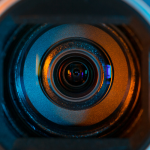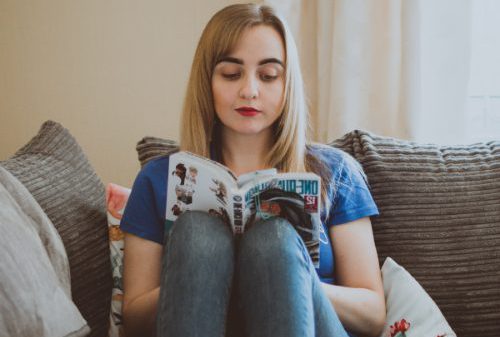最終更新日:2020/03/10
(Featured AI and healthcare) Efficient prediction of kidney allograft rejection! Realized by fully automatic system using convolutional neural network (Publication)
[論文] Y.-G. Kim, G. Choi, H. Go, Y. Cho, H. Lee, A-R. Lee, B. Park and N. Kim, “A Fully Automated System Using A Convolutional Neural Network to Predict Renal Allograft Rejection: Extra-validation with Giga-pixel Immunostained Slides”. Scientific Reports, 9, 5123 (2019).
[DOI: https://doi.org/10.1038/s41598-019-41479-5]
3つの要点
✔️病理学的診断は、非効率的なうえに、診断結果が観察者の影響を受けやすいという問題があった。
✔️腎臓同種移植片拒絶反応の診断において、この問題を解決するため、畳み込みニューラルネットワーク(CNN)を用いた完全自動化システムが開発された。
✔️本研究で開発されたシステムは、非常に信頼性が高く、他の疾患の検出にも応用が期待できる。
概説
病理学的診断は、主に病理学者による視覚的な採点、すなわち、時間がかかるうえに面倒であり、観察者間および、または観察者内の変動に影響されやすいプロセスに依存している。
本研究では、腎臓同種移植片拒絶反応の病理学的採点を強化するための新しい手法を提案する。
関心領域(regions of interest;ROI)を同定し、ギガピクセル免疫染色スライド中のC4d陽性および陰性傍尿細管毛細血管(peritubular capillaries;PTC)を検出するため、畳み込みニューラルネットワーク(Convolutional Neural Network;CNN)を用いた完全自動化システムを開発した。
ラベル付きマスクのサイズを拡大するための新手法の最適パラメータを用いて、Faster R-CNNの性能を評価した。
拡大サイズ画像の50ピクセルおよび40ピクセルが、それぞれC4d陽性・陰性PTCを検出するのに最良の性能を示した。
さらに、このモデルでの検出を強化するための独立したデータセットとして、ディープラーニングによるラベリングの実現可能性を評価した。
これら2つのCNNの手法に基づいて、腎臓同種移植片拒絶反応のための完全自動化システムが開発された。
このシステムは非常に信頼性があり、効率的かつ効果的で、実際の臨床ワークフローにも適用可能である。
このシステムは非常に信頼性があり、効率的かつ効果的で、実際の臨床ワークフローにも適用可能である。
(a)C4d陽性PTC、(b)C4d陰性PTC の検出結果
FROCスコアおよび全体的な感度は、マージンサイズが大きくなるにつれて増加したが、C4d陽性PTC検出時(a)の場合は50ピクセルで最適となり、60ピクセルになると減少した。同様に、C4d陰性PTC検出時(b)の場合は40ピクセルで最適であった。
Faster R-CNN検出アルゴリズムを用いた、(a)C4d陽性PTC および(b)C4d陰性PTC を検出するための、異なる検証セット間の観察者間および観察者内変動を示すFROC比較
Faster R-CNNとYOLO v2検出アルゴリズムを用いた、(c)C4d陽性PTC および(d)C4d陰性PTC を検出するための、ディープラーニングによるラベリングの有効性を検証するFROC比較
著者
Young-Gon Kim (Department of Biomedical Engineering, Asan Institute of Life Science, University of Ulsan College of Medicine, Asan Medical Center, 88 Olympic-ro 43-gil, Songpa-gu, Seoul, South Korea / Department of Convergence Medicine, University of Ulsan College of Medicine, Asan Medical Center, 88 Olympic-ro 43-gil, Songpa-gu, Seoul, South Korea / Center for Superintelligence, Seoul National University, 08826, Seoul, South Korea)
Gyuheon Choi( Department of Pathology, University of Ulsan College of Medicine, Asan Medical Center, 88 Olympic-ro 43-gil, Songpa-gu, Seoul, South Korea)
Heounjeong Go (Department of Pathology, University of Ulsan College of Medicine, Asan Medical Center, 88 Olympic-ro 43-gil, Songpa-gu, Seoul, South Korea)
Yongwon Cho (Department of Biomedical Engineering, Asan Institute of Life Science, University of Ulsan College of Medicine, Asan Medical Center, 88 Olympic-ro 43-gil, Songpa-gu, Seoul, South Korea / Department of Convergence Medicine, University of Ulsan College of Medicine, Asan Medical Center, 88 Olympic-ro 43-gil, Songpa-gu, Seoul, South Korea / Center for Superintelligence, Seoul National University, 08826, Seoul, South Korea)
Hyunna Lee (Department of Convergence Medicine, University of Ulsan College of Medicine, Asan Medical Center, 88 Olympic-ro 43-gil, Songpa-gu, Seoul, South Korea / Center for Superintelligence, Seoul National University, 08826, Seoul, South Korea)
A-Reum Lee (Department of Convergence Medicine, University of Ulsan College of Medicine, Asan Medical Center, 88 Olympic-ro 43-gil, Songpa-gu, Seoul, South Korea / Center for Superintelligence, Seoul National University, 08826, Seoul, South Korea)
Beomhee Park (Department of Biomedical Engineering, Asan Institute of Life Science, University of Ulsan College of Medicine, Asan Medical Center, 88 Olympic-ro 43-gil, Songpa-gu, Seoul, South Korea / Department of Convergence Medicine, University of Ulsan College of Medicine, Asan Medical Center, 88 Olympic-ro 43-gil, Songpa-gu, Seoul, South Korea / Center for Superintelligence, Seoul National University, 08826, Seoul, South Korea)
Namkug Kim (Department of Convergence Medicine, University of Ulsan College of Medicine, Asan Medical Center, 88 Olympic-ro 43-gil, Songpa-gu, Seoul, South Korea / Center for Superintelligence, Seoul National University, 08826, Seoul, South Korea)
出版情報
Received: 26 July 2018 / Accepted: 4 March 2019 / Published: 26 March 2019
Open Access This article is licensed under a Creative Commons Attribution 4.0 International License, which permits use, sharing, adaptation, distribution and reproduction in any medium or format, as long as you give appropriate credit to the original author(s) and the source, provide a link to the Creative Commons license, and indicate if changes were made. The images or other third party material in this article are included in the article’s Creative Commons license, unless indicated otherwise in a credit line to the material. If material is not included in the article’s Creative Commons license and your intended use is not permitted by statutory regulation or exceeds the permitted use, you will need to obtain permission directly from the copyright holder. To view a copy of this license, visit http://creativecommons.org/licenses/by/4.0/.
■サポートのお願い
AIDBを便利だと思っていただけた方に、任意の金額でサポートしていただけますと幸いです。































 PAGE TOP
PAGE TOP